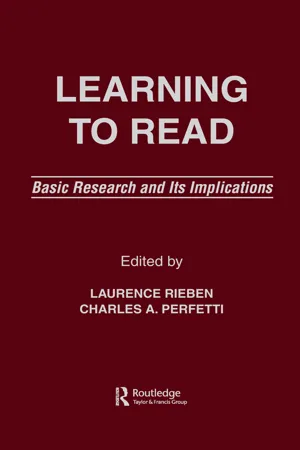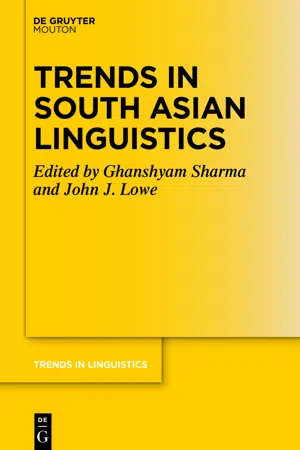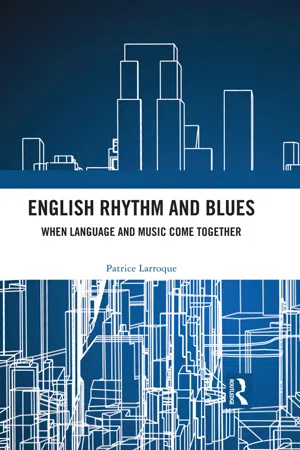Languages & Linguistics
Multisyllabic
Multisyllabic refers to words that have more than one syllable. In linguistics, the study of multisyllabic words involves analyzing their structure, stress patterns, and phonological characteristics. Understanding multisyllabic words is important for language learners and educators as it impacts pronunciation, fluency, and comprehension in speech and reading.
Written by Perlego with AI-assistance
Related key terms
1 of 4
Related key terms
1 of 3
4 Key excerpts on "Multisyllabic"
- eBook - ePub
Learning To Read
Basic Research and Its Implications
- Laurence Rieben, Charles A. Perfetti(Authors)
- 2013(Publication Date)
- Routledge(Publisher)
11 The Role of Intrasyllabic Units in Learning to Read
Rebecca Treiman Wayne State UniversityDOI: 10.4324/9781315044453-14Introduction
As many investigators (e.g., Gough & Hillinger, 1980 ; Liberman, 1982 ) have pointed out, children's knowledge of spoken language plays an important role in their acquisition of written language. Because writing systems reflect spoken language, studies of language structure provide an important foundation for studies of how children learn to read. This chapter focuses on one specific aspect of spoken language structure—phonological units that are intermediate in size between syllables and phonemes. After reviewing the linguistic status of these intrasyllabic units, I discuss their role in the development of phonological awareness and the learning of reading. Implications for reading instruction are also considered.Linguistic Views of Syllable Structure
Until relatively recently, the syllable was little discussed within linguistics. Some linguists mentioned the syllable only to ignore it; others asserted that the syllable played no role in phonological organization. Recently, however, there has been increased attention to syllables and their structure. In one view (e.g., Hooper, 1972 ), the syllable is a linear string of phonemes. There are no levels of structure intermediate between the syllable and the phoneme. Another view (e.g., Fudge, 1969 ; Hockett, 1967/1973 ; Selkirk, 1982 ) holds that the phonemes within a syllable are organized hierarchically. There exist phonological units that are intermediate in size between syllables and phonemes. The linguists just cited postulate two major subunits of the syllable, the onset and the rime. The onset, or initial consonantal portion of the syllable, is a single consonant or consonant cluster. The rime is the vowel and any following consonants. Thus, the word blast has the onset/bl/ and the rime /æst/.Much of the evidence for onset and rime units comes from English. For English, there are several converging lines of evidence, including constraints on the distributions of phonemes within syllables, errors in the production of speech, natural and experimental word games, and errors in short-term memory for spoken syllables. This evidence is reviewed by Treiman (1988 - eBook - ePub
- Ghanshyam Sharma, John J. Lowe, Ghanshyam Sharma, John J. Lowe(Authors)
- 2021(Publication Date)
- De Gruyter Mouton(Publisher)
The common assumption in many of the experimental designs has been to regard the syllable not as an abstract structure but as a phonotactic constraint which would affect the data selection. Studies that have tried to look at syllable structure have found more positive evidence suggesting that lexically represented syllable structure would be more consistent with the available data rather than articulatory representation. The overall economy that is claimed to be achieved by not storing syllables is efficient, but not at the expense of discarding the syllable altogether which actually requires more storage in the form of phonotactic constraints (which are themselves violated if not for syllabic information). While it is true that Occam’s razor should be used in deciding on such matters, it must be borne in mind that it also stipulates that the application should be in the absence of contradictory evidence. As is clear from the literature, the evidence is far from conclusive in discarding the syllable.Even though the importance of the syllable to various phonological rules is undeniable, it is notoriously difficult to get a phonetic definition of it. A common view was to define it in terms of prominence peaks (such as vowels). However, there are issues with syllable boundaries as can be seen in the violation of certain prominence peaks as in words like extra and dogs. However, most words in a language are open to unambiguous syllabification by native speakers. Theories of syllable structure often involve the assumption of a maximum syllable structure for each language. Generally speaking, these maximal consonants in a syllable are often only seen at word edges with word-medial syllables being rather simple as can be observed in English (Borowsky 1986 ), Greek (Steriade 1982 ), German (Giegerich 1989), Polish (Bethin 1992 ), and Georgian (Butskhrikidze 2002 ). Therefore, considerations of a maximal syllable structure often revolve around how to define word edges. Abercrombie (1967) , Haugen (1956) , Fudge (1969) , Kahn (1976) , Hammond (1999) , and Blevins (2003) assume all consonants at word edges need to be part of the syllable so that twelfths would have a syllable structure of CCVCCCC. However, this does raise the issue of why word-medial syllables are simple. The argument that consonants cannot be pronounced without syllables is challenged by such utterances in English such as shhh [ʃ], and psst [pst]. However, if we consider these to be syllables, twelfths would be syllabified as [twɛ][lf][θs] which would not be accepted by speakers of English as syllables (consider also: self, help, and serf - eBook - ePub
English Rhythm and Blues
Where Language and Music Come Together
- Patrice Paul Larroque(Author)
- 2021(Publication Date)
- Routledge(Publisher)
traditio). The language is English, the English that the slaves learned from their masters, and the first elements they perceived was the rhythm and intonation upon which they naturally relied to understand. A foreigner will not be able to interpret the words of an utterance or rather will interpret them in the same way as his or her own mother tongue if they are pronounced in one breath, with no inflection of the voice and no pause. An utterance in French may, for instance, sound like one long word to an English ear.The perception of the rhythm of a language first depends on the syllable which is not only the smallest rhythmic unit of a language (Attridge 1982 : 60), but also an element which can be isolated, perhaps recognized, and which constitutes a reliable regular articulatory basis. Thus, when trying to understand an utterance in a new and unfamiliar language, the learner will stick to the first speech signal of the new language that he or she can perceive, and in particular its rhythmic structure (Attridge 1982 : 70). The syllable, then, acquires great interest in the rhythm of speech. It is an important element which includes duration and cadence. If syllables have no fixed duration, there is still some regularity in the recurrence of stressed ones. It is, however, sometimes difficult to define the limits of syllables in a word or an utterance.1.2.1 Nature and representation of syllablesSyllables can be defined in two different ways: phonetically and phonologically. Phonetically, a syllable normally contains a single vowel in the nucleus and one or more consonants. The syllable is usually represented (see Carr 1999 ; Roach 2000 ) by the Greek letter σ (sigma), the letter O stands for the onset of the syllable and R for the rhyme which in turn can be subdivided into the nucleus (N) and the coda (C). In the word take, for instance, the onset is the initial consonant /t/, the vowel /eɪ/ constitutes the nucleus and the final consonant /k/ the coda, as shown in (6).In a language, the smallest possible word contains only one syllable. There is no word smaller that a syllable. The minimal syllable amounts to a single vowel as in English words like eye (/aɪ/), or (/ɔ:/), are (/a:/), a (/ә/), exclamations like oh! (/әʊ/), ooh! (/u:/), or ow! (/aʊ/) to express pain. In general, all languages have syllables containing onsets and rhymes. That is the reason why CV-like syllables (i.e. containing a consonant and a vowel) can be found in all languages. A syllable with an “empty” onset is a syllable which does not contain an onset consonant as in arrive - eBook - ePub
- Javier Caro Reina, Renata Szczepaniak, Javier Caro Reina, Renata Szczepaniak(Authors)
- 2014(Publication Date)
- De Gruyter(Publisher)
‘autumn-GEN. SG’, respectively. In word languages complex syllable structures are expected to occur in stressed syllables and at word and morpheme boundaries. Additionally, speech tempo may cause the increase of syllable complexity (for examples in Romance languages see Heinz, this volume). While complex syllable structures are indicative of word languages, the opposite does not necessarily hold. That is, a simple syllable structure may also be found in a word language. This is the case with languages such as !Xóõ and Nama, which have a simple syllable structure. However, they demarcate word-initial boundaries by means of phonotactic restrictions. As a consequence, a consonant set may appear exclusively in the word-initial onset (Auer 1993: 84). In this respect, the absence of a complex syllable structure obeys strong phonotactic restrictions. In view of the different patterns described for the syllable and word language types, the notion of “marked” and “unmarked” syllable structures comes into a new light. A complex syllable structure is marked in a syllable language. In contrast, a complex syllable structure is unmarked in a word language.With regard to the distribution of the vowel and consonant inventory, we can differentiate between a symmetrical system which is consistent with a syllable language and an asymmetrical system which is consistent with a word language. In syllable languages, the occurrence of vowels and consonants is not dependent on word-related factors such as stress or within-word position. For example, in Spanish the same consonants may appear both in word-initial and word-medial onsets. Similarly, the same vowels may appear in both stressed and unstressed position (Szczepaniak 2009). In syllable languages, phonotactic restrictions are conditioned by the syllable structure, as in Chinese where obstruents only occur in the syllable onset. In contrast, word languages exhibit asymmetrical distributions which help to highlight the phonological word. In this respect, Trubetzkoy (1971: 242) speaks of Grenzsignale (‘boundary signals’). Asymmetrical distributions usually arise from phonological processes. Processes leading to vowel asymmetries include vowel lengthening and diphthongization in stressed syllables and vowel reduction in unstressed syllables. Vowel reduction processes in unstressed syllables imply the neutralization of contrasts of vowel height, quantity, and nasalization (Barnes 2006: 20) such that phonological oppositions (e.g. quantity oppositions) are licensed only in stressed syllables. For example, in German the occurrence of schwa is limited to unstressed syllables as in Blume [ˈbluːmə] ‘flower’ or flieg-en
Index pages curate the most relevant extracts from our library of academic textbooks. They’ve been created using an in-house natural language model (NLM), each adding context and meaning to key research topics.
Explore more topic indexes
Explore more topic indexes
1 of 6
Explore more topic indexes
1 of 4



